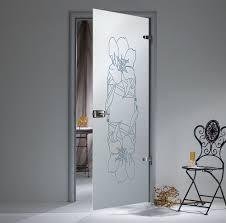Glass doors are integrating one of the most important details of a stylish interior today. They can give the room a special look, visually expand it, fill it with light, eliminate oppressive isolation and give the interior its own originality.
You can find a striking variety of designs for glass doors. The glass used can be transparent, patterned, tinted or matte, but in all cases without exception, tempered. Tempered glass increases heat resistance, impact resistance and reliability. Glass thickness varies from 8 to 12 mm.
Classification of glass doors
By the type of opening, glass doors are divided into:
Pivot doors (can open in both directions).
Hinged doors (open to the outside or to the inside of the room).
Sliding doors with automatic and manual opening.
By design, interior glass doors are of two types: framed and frameless.
The frame (box) for a glass door can be made of wood or metal, but in most cases an aluminum profile is used for this purpose. Accessories (handles, hinges, locks) are attached to the frame.
Frameless or solid glass interior doors are made entirely of tempered glass. In this case, there is no frame, so that these doors are only pendular or sliding.
The first question a customer asks when choosing a glass door: how safe is it? The glass used for glass doors, tempered or triplex, is impact resistant and is characterized by increased strength. And to cause damage to them, you have to make an effort.



